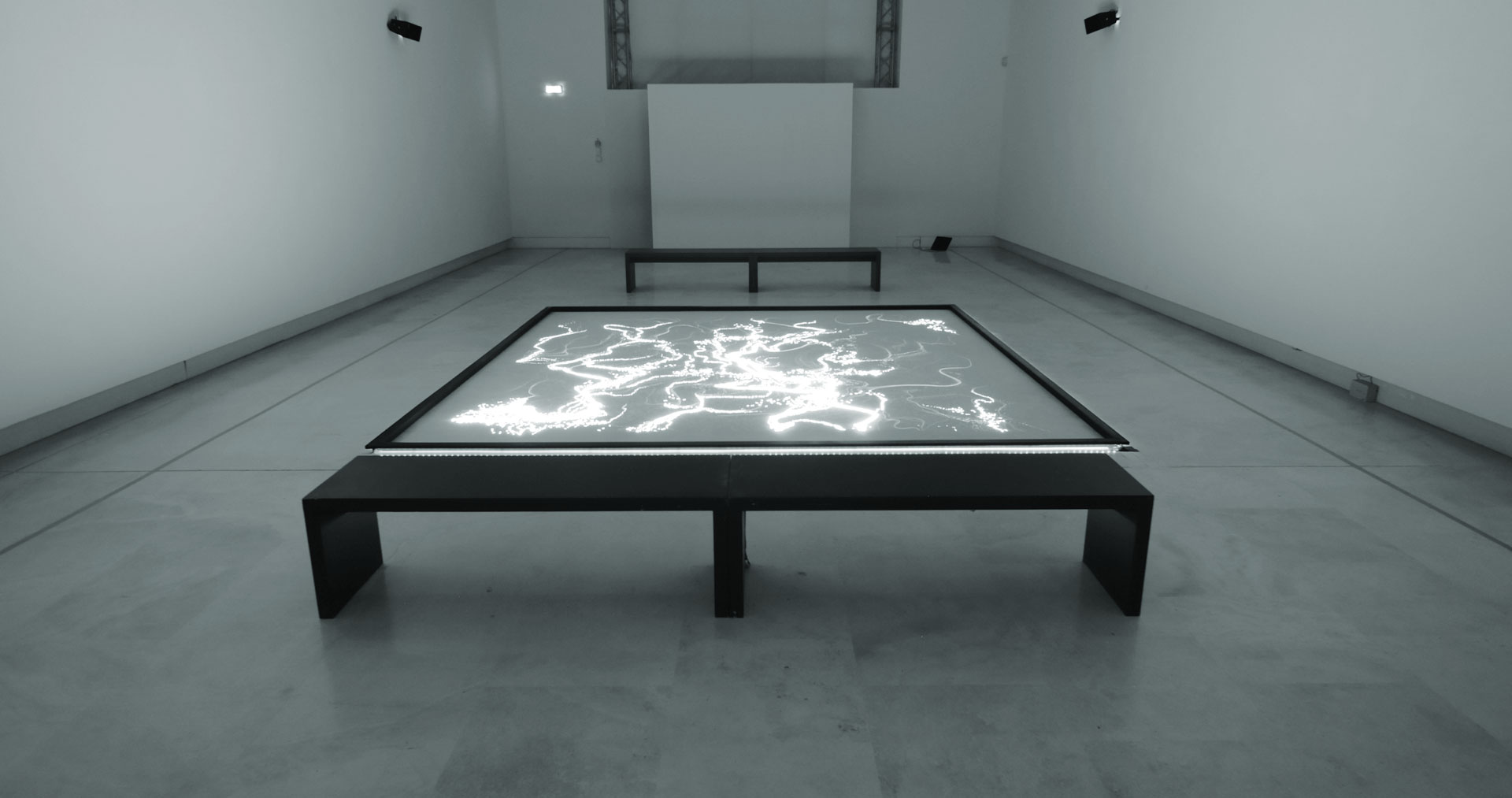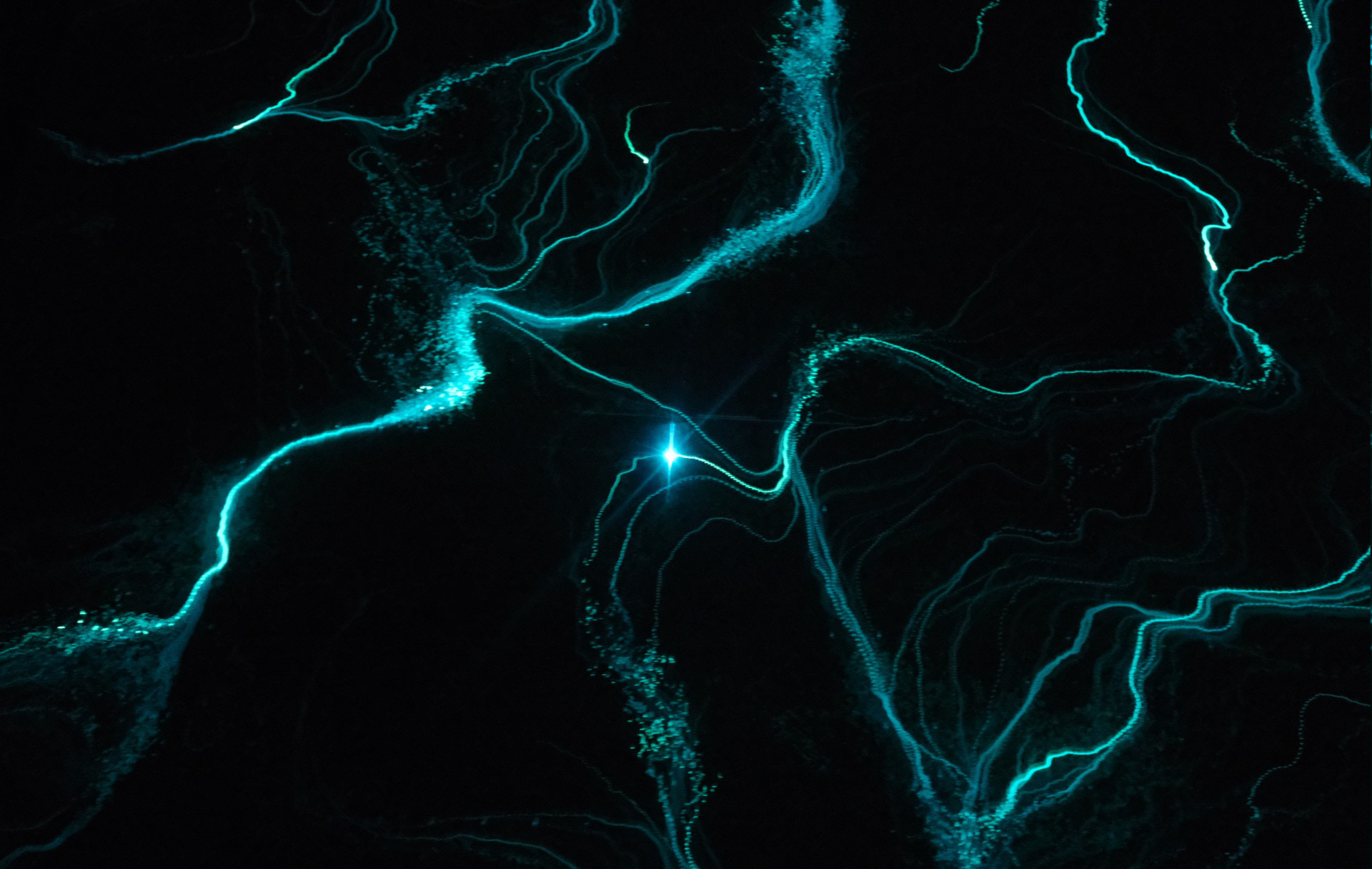Phosphor
UV laser installation [2017, modified 2018, 2021]
Focused rays of ultraviolet light paint a temporary landscape on a layer of phosphorus dust: rivers of light finding their way to the ocean. Based on a simple physics simulation involving concepts of erosion and mutation, the installation changes its behaviour and visual appearance over time. Each trace of light leaves a mark on a virtual mountain range, like water slowly carving deep canyons, observed from above.
Memory
The light source, which acts as the pen, is a single ultraviolet laser beam controlled by a computer program written by the artist. The laser excites phosphorescent “afterglow” pigments, producing vivid glowing traces that gradually darken over several minutes while being painted over again and again. The canvas retains a fading memory of time.
Landscape
At the hidden digital core of the installation, a piece of code represents an imaginary landscape: a 3D model of a non-existing world, a mountain range made of data.
The laser beam draws the result of placing a drop of water at a random position in this landscape and calculating the best path downhill to the coast—the edges of the canvas.
While doing so, it slightly alters the mountain’s shape, in a rough approximation of effects of erosion, resulting in different trajectories as time passes.
Divine Intervention
The model is not perfect; it needs divine intervention to remain interesting. At times, the paths of the virtual water drops are artificially disturbed, turning straight lines into clouds of points: a small thunderstorm which produces complex visual shapes and accelerates the process of erosion.
At other times, the movement follows a grid, inspired by large-scale man-made structures embedded in our landscapes, such as endless progressions of oil pumps in the desert.
The only pre-programmed elements are the basic behaviour and a set of random probabilities that govern certain events. The creative process lies in tuning these values: defining movement speeds and the degree of inherent randomness. Once this is done, the world is left to itself, beyond the artist’s control. The artist becomes merely an observer just like the audience.

Exhibitions
March 16th 2023 - June 4th 2023
Thin Air
London, England
November 4th 2021 - November 7th 2021
KIKK festival
Namur, Belgium
August 8th 2021 - August 15th 2021
Electric Castle Festival
Cluj, Romania
February 07 2020 - February 08 2020
Strom Festival
Philharmonie Berlin Herrman Wolf Saal
Berlin, Germany
October 23 2019 - October 27 2019
INDEX Festival
Theatro Circo
Braga, Portugal
August 20th 2019 - August 25th 2019
MUTEK Festival
SAT
Montreal, Canada
March 28 2019 - June 9 2019
Espacio Fundacion Telefonica
Lima, Peru
November 9th 2018 - November 20th 2018
Festival VIA
Maubeuge, France
September 19th 2018 - September 23rd 2018
Scopitone Festival 2018
Château des ducs de Bretagne
Nantes, France
October 7th 2017 - January 7th 2018
DigitaLife, Romaeuropa Festival 2017
Palazzo delle Esposizioni
Rome, Italy
